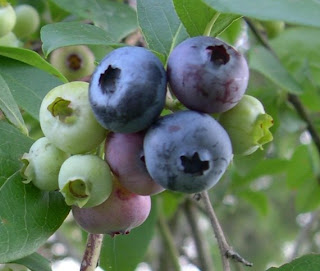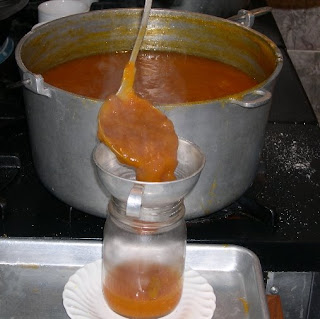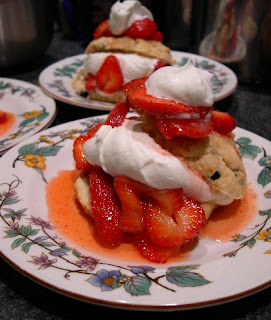
Since I was a girl I have had an ongoing love affair with blueberries. Just as in any love affair I can’t tell you exactly what it is about these berries that I find so much more attractive than say strawberries or raspberries, maybe it’s their dark smooth skin or their lack of noticeable seeds or their tart-sweet flavor. I just know that since the day I ate my first plump blue-purple specimen I have been head over heels about them. In the Julys of my childhood when the berries were at their peak and inexpensive Mom would buy them by the pound at the supermarket or farmers’ market and I would devour them directly from the quart box or in any recipe she and I could find. Mom says that it was at least thirty-five years ago that my love for the little blue buttons inspired her to order some plants for our garden.
Blueberries are native to North America. They belong to the same plant family as cranberries and azaleas. Native Americans used them as a dye as well as food. So why don’t we say,” As American as blueberry pie?”
Today there are three types of blueberries in cultivation, the Northern Highbush, the Southern Rabbiteye which grows as far south as Georgia, and the Lowbush which is very cold hardy and grows as far north as the Artic. The Northern Highbush is what Mom ordered for our garden. It is now a six foot tall shrub with shiny green leaves that turn cranberry red in the fall. It is also the sole survivor of that first order and, much to my disappointment, every other order I have planted since.

Usually I am pretty easy going about sharing the fruit we have in the garden and orchard with the birds and wild animals, but not the blueberries. The moment there is a ripe berry on that bush I’m there with the bird net. No darned Mockingbirds are getting any of my blueberries! Since we only have one bush the berries that I harvest from the garden are usually reserved for eating out of hand because they have such intense flavor. I usually buy the blueberries I use in baking. When you buy blueberries look for round plump ones that are not shriveled or moldy.
Here is one of my favorite blueberry recipes.
Blueberry Oatmeal Muffins
½ cup all-purpose flour
½ cup whole wheat flour
1 cup uncooked old fashion rolled oats
½ cup packed brown sugar
2 ½ teaspoons baking powder
½ teaspoon salt
½ cup milk
1 egg, slightly beaten
¼ cup canola oil
1 teaspoon vanilla
1 cup blueberries, fresh or frozen (do not thaw)
½ cup fresh or dried apricots, chopped
2 Tablespoons flax seeds

Preheat oven to 400 degrees. Line 8 regular size muffin cups with papers. In a large bowl stir together flours, oats, brown sugar, baking powder, and salt. In another bowl stir together milk, egg, oil, and vanilla until blended. Add milk mixture to flours and stir just until everything is combined. Stir in blueberries and apricots. Spoon batter into muffin cups. Sprinkle tops with flax seeds. Bake 15 to 20 minutes until a toothpick inserted into the center of the muffin comes out clean. Hot from the oven they tend to fall apart so try to let them cool a bit before eating. They freeze well.

So whether you call them bilberries, whortleberries, hurtleberries, cowberries, or farkleberries I still love them.






























